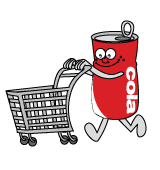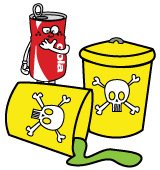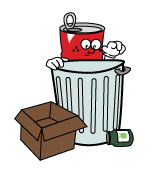Hãy nhập câu hỏi của bạn vào đây, nếu là tài khoản VIP, bạn sẽ được ưu tiên trả lời.

1. Yes , I have . I used for carrying food and some thing else
2. They are belong to things to reduce, reuse or recycle
3. Because it is very bad for our environment
4. We need to stop using it for carry
5. I take part in many activities to protet the environment and raise people awareness about it


1.
Water is uniquely vulnerable to pollution. Known as a “universal solvent,” water is able to dissolve more substances than any other liquid on earth. It’s the reason we have Kool-Aid and brilliant blue waterfalls. It’s also why water is so easily polluted. Toxic substances from farms, towns, and factories readily dissolve into and mix with it, causing water pollution.
Categories of Water PollutionGroundwater
When rain falls and seeps deep into the earth, filling the cracks, crevices, and porous spaces of an aquifer (basically an underground storehouse of water), it becomes groundwater—one of our least visible but most important natural resources. Nearly 40 percent of Americans rely on groundwater, pumped to the earth’s surface, for drinking water. For some folks in rural areas, it’s their only freshwater source. Groundwater gets polluted when contaminants—from pesticides and fertilizers to waste leached from landfills and septic systems—make their way into an aquifer, rendering it unsafe for human use. Ridding groundwater of contaminants can be difficult to impossible, as well as costly. Once polluted, an aquifer may be unusable for decades, or even thousands of years. Groundwater can also spread contamination far from the original polluting source as it seeps into streams, lakes, and oceans.
Surface water
Covering about 70 percent of the earth, surface water is what fills our oceans, lakes, rivers, and all those other blue bits on the world map. Surface water from freshwater sources (that is, from sources other than the ocean) accounts for more than 60 percentof the water delivered to American homes. But a significant pool of that water is in peril. According to the most recent surveys on national water quality from the U.S. Environmental Protection Agency, nearly half of our rivers and streams and more than one-third of our lakes are polluted and unfit for swimming, fishing, and drinking. Nutrient pollution, which includes nitrates and phosphates, is the leading type of contamination in these freshwater sources. While plants and animals need these nutrients to grow, they have become a major pollutant due to farm waste and fertilizer runoff. Municipal and industrial waste discharges contribute their fair share of toxins as well. There’s also all the random junk that industry and individuals dump directly into waterways.
 Don't let the Trump administration pollute our drinking water
TAKE ACTION
Don't let the Trump administration pollute our drinking water
TAKE ACTION
Ocean water
Eighty percent of ocean pollution (also called marine pollution) originates on land—whether along the coast or far inland. Contaminants such as chemicals, nutrients, and heavy metals are carried from farms, factories, and cities by streams and rivers into our bays and estuaries; from there they travel out to sea. Meanwhile, marine debris—particularly plastic—is blown in by the wind or washed in via storm drains and sewers. Our seas are also sometimes spoiled by oil spills and leaks—big and small—and are consistently soaking up carbon pollution from the air. The ocean absorbs as much as a quarter of man-made carbon emissions.
Point source
When contamination originates from a single source, it’s called point source pollution. Examples include wastewater (also called effluent) discharged legally or illegally by a manufacturer, oil refinery, or wastewater treatment facility, as well as contamination from leaking septic systems, chemical and oil spills, and illegal dumping. The EPA regulates point source pollution by establishing limits on what can be discharged by a facility directly into a body of water. While point source pollution originates from a specific place, it can affect miles of waterways and ocean.
Nonpoint source
Nonpoint source pollution is contamination derived from diffuse sources. These may include agricultural or stormwater runoff or debris blown into waterways from land. Nonpoint source pollution is the leading cause of water pollution in U.S. waters, but it’s difficult to regulate, since there’s no single, identifiable culprit.
Transboundary
It goes without saying that water pollution can’t be contained by a line on a map. Transboundary pollution is the result of contaminated water from one country spilling into the waters of another. Contamination can result from a disaster—like an oil spill—or the slow, downriver creep of industrial, agricultural, or municipal discharge.

Topic 1: Write about types of pollution.
P/s : Chi 1 cai o nhiem thoi ...
Nowadays there are a lot of types of pollution such as : air pollution, water pollution, visual pollution .... and noise pollution. Noise pollution is constant and loud sound. To measure the loudness, or volumn of sounds , people use a unit called a decibel. When a sound is louder than 70 decibels, it can cause noise pollution. Do you know that the noise from a vacuum cleaner or motorcycle can result in permanent hearing loss after eight hours ? The sounds of a concert are even more serious. Noise pollution can also lead to headaches and high blood pressure. If you are listening to music throughout headphones, and other people can hear it, it means the music is too loud and unsafe.
=> Bai nay co tao rut tu trg bai skills , co them y, cai nay thieu giai phap, tu xu.
Topic 2 : Talk about natural diasters and ways to prepare for them.
Today, there are more and more natural disasters that most people affect. In my opinion, we can't prevent natural disaster but we can have some preparation for them. There are many types of natural disasters but typhoon is a popular in our country. Firstly, typhoon is a tropical storm with wind and heavy rain. When it strike, it can weak havoc across large areas and effect lot of life or extensive damage to property . Flood can be happened by long heavy rain and people also can be became homeless. Last year lots of people were seriously injure in a typhoon. Natural disasters are also very dangerous but we also have some simple preparation . The first step is learnt about the risk in your area and read the information about natural disasters on gorvernment site. Next, find out that the rescue and emergency workers advice. It 's also important that you put together emergency supply it and should include food, water, medicine, document, and some money. Finally , plan safe places to meet your family and get to know the evacuation routes and shelter. In short, everyone sholuld protect environment to reduce this natural disasters.
3) Talk about ways of communication now and in the future.
Communication is a neccesary for eberyone. In present , there are three basic forms of communication: verbal, non-verbal and multimedia.
First, verbal ( meeting F2F) is a important way of communication help you success. I like hanging out with my friends and my friends and when I meet F2F with them I feel very confident. It explains why I can speak English easily. Let ' s try! You will have a great time. Secondly, you have a different thing to say non- verbal ( using signs ) will be a good choice. For example, you make your mother sad , you can use a sign to say ' sorry ' to her. Thirdly, with develop of science and technology , many multimedia appear such as video chatting , emailing,... You can know more information despite you still stay at home. But in the future, we can use telepathy or holography. Telepathy uses a tiny device place into our head. We will be communicating just by thought over the network. Holography will help us in our work. Even though, I prefer to chat with my friends. Life is more meaningful that way !
Khủng bố , :(((

1.You work until 11 every night.(not work so hard)
=>You shouldn't work so hard
2.It's Mai's birthday on Saturday.I think we should do something.(buy her a nice birthday present)
=>We should buy her a nice birthday present
3.The car did not start this morning.(take it to the garage)
=>You should take it to the garage
4.Our train leaves at 6 o'clock tommorrow morning.(go to bed early tonight)
=>We should go to bed early tonight
5.He always gives you the wrong advice.(not listen to him)
=>You shouldn't listen to him
6.Everything will be all right.(not worry so much)
=>You shouldn't worry so much
7.He doesn't like this job because it's so boring.(look for another one)
=>He should look for another one
8.It's too late to play music so loudly,we'll wake up the neighbours.(turn it off)
=>We should turn it off
9.Your hair is so long.(have a haircut)
=>You should have a haircut
10.He doesn't understand the lesson.(meet the teacher after class)
=>He should meet the teacher after class

There are many ways to reduce the amount of the garbage we produce. I will show you some ways. First, you should reduce the amount of domestic waste by changing some of the daily routine like using reusable bags instead of plastic bags. Secondly, you let Shop smart - you should choose products with boxes made of recycled materials, such as paper or plastic, to sell to scrap collectors. Last but not least , you also should carefully classify waste before putting it in the bin. This is some ways that we can reduce the amount of the garbage we produce.

You can reduce the amount of waste you create by choosing what rubbish you throw away. This can be easy and fun – just follow our simple guidelines to reduce your waste at home, school or work.
What To Buy and How To Use It
Waste reduction starts at the supermarket. By making slight alterations to your shopping list you can significantly reduce the amount of waste created in and around the home.

Buy only what you need
Reduce unnecessary waste by avoiding those pointless purchases. Items that rarely get used can be borrowed or shared with others.

Buy products that can be reused
Buy bottles instead of cans and rechargeable batteries. Items such as this create very little waste, as they don’t have to be thrown away after they have been used just once.

Buy all-purpose household cleaner
Instead of buying many different ones for each cleaning role.

Buy products with little packaging
So that less packaging ends up in your rubbish bin. For those items you use regularly, buy them in bulk instead of in smaller amounts. This will save you money as well as reduce waste.

Sell or give away unwanted items Reduce waste by donating unwanted items to family, friends or neighbours. You could even sell your possessions in a car-boot sale and earn some extra cash.

Reduce paper waste by cancelling unwanted mail You can unsubscribe to many national mailing lists by contacting the Direct Marketing Association:
www.dma.org.uk
Reducing Hazardous Waste
Many hazardous products cannot be recycled as they contain harmful chemicals. However, there are ways of reducing waste by dealing with hazardous products in the correct manor.

Buy non-toxic products whenever possible
Many toxic products such as motor oil and pesticides cannot be reused.

Recycle motor products
Such as break fluid, oils and tyres by taking them to your local petrol station. By recycling these products instead of throwing them away, you are reducing hazardous waste.

Use all of the toxic product, such as furniture polish, so there is no hazardous material left in the container when it is discarded.

Find safer alternatives to hazardous household products.
You can even make your own household cleaners using products such as baking soda and vinegar. Olive oil with lemon juice is a good alternative to furniture polish and using scented candles are a good alternative to air fresheners.
Think Before You Throw
Many of the items that you would normally consider as rubbish could be used for other purposes. So instead of throwing items away, reduce waste by using them for other roles.

Paper and Envelopes
Can be used as scrap paper for making notes.

Cardboard, Newspaper and Bubble Wrap
Can be used as packing materials. Packaging products, such as foil and egg cartons, can be used for art projects in schools and nurseries.

Jars and Pots
Can be used as small containers to store odds and ends.

Plastic and Paper Bags
Can be reused in the shops, used as bin bags around the house or as wrapping paper.

Used wood
Can be used in woodcrafts for making small garden objects such as bird tables. Alternatively it could be used as firewood.
As we know, nowadays, rubbish treatment is one of big problems on the world. I'll tell you some reasons to reduce the amount of garbage we produce.
First,You can reduce the amount of waste you create by choosing what rubbish you throw away. This can be easy and fun to reduce your waste at home, school or work.
Second, Buy products that can be reused such as: we buy bottles instead of cans. Because they don’t have to be thrown away.
In my opinion, you should reduce the amount of waste you create; think before you throw.
P/S ngu lâu dốt bền sai gì đừng ns :))


Nhầm ns về vc sơ cứu nhé